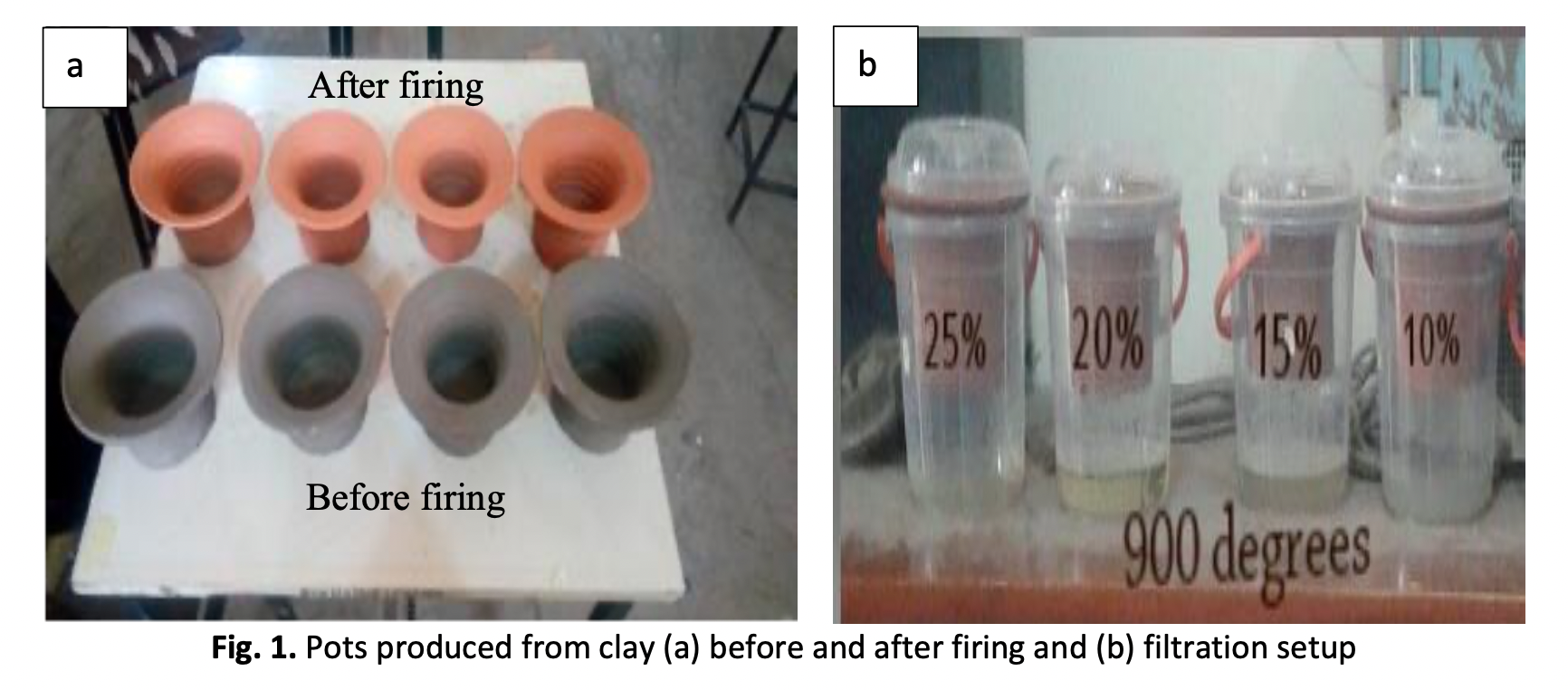Preparation and Characterization of a Clay-Based Ceramic Membrane for Tannery Wastewater Treatment
DOI:
https://doi.org/10.37934/araset.30.1.114Keywords:
Montmorillonite, Mesoporous, Membrane, Tannery wastewaterAbstract
In this work, a porous clay-based ceramic membrane was developed from locally sourced clay from Nigeria. The clay was ground and sieved through 100 μm size. The chemical, mineralogical, thermal and particle size properties of the clay were determined using XRF, XRD, TGA/DTA and PSD respectively. Starch composition from 10-25 wt% was added to the clay and thoroughly mixed with water. The dough was cast on a potter’s wheel. The produced membranes were fired at a temperature of 900 °C. The maturation properties of the fired clay were determined using bulk density and apparent porosity. Multi-point BET was used to determine the pore characteristics of the membranes. The flexural strength of the produced membrane was determined using a three-point bending test. The microstructure of the fired clay was recorded using FESEM. Membranes produced from the clay were used for the treatment of tannery wastewater. The XRF result shows that the clay contains high silica and alumina. Also, the XRD results show the clay contains many peaks of montmorillonite and other peaks of feldspar and quartz. The BET shows that the pore size of the membranes produced was in the mesoporous range. From water quality test, it shows that the locally sourced clay can be used to produce ceramic membranes for filtration and separation applications.
Downloads





























